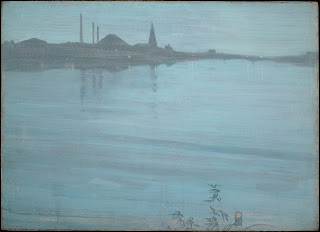Many other such perfect words do exist in Japanese, though. Starting with the one that inspired this post:
木漏れ日 komorebi, meaning dappled sunlight filtered through tree leaves. It was the original working title of Wim Wenders's Perfect Days, which we watched tonight—and yes, there are plenty of shots straight up, into tree canopies, with light filtering down. It's a sweet feeling, to be in that light, and how lovely that Japanese has a single word for it.
That word got me googling, of course, and I found some lists with other excellent words. Here are a few of them.
懐かしい natsukashii, meaning bringing forth grateful memories of the past. It's not nostalgia, tinged with sadness or longing, but rather a contented feeling of gratitude: that the memory happened at all, even if one has moved on in life.
生きがい ikigai: a reason for being—or simply for getting up in the morning. I wrote about ikigai here.
守りたい mamori tai, meaning literally I will always protect you: something whispered to a loved one
森林浴 shinrin-yoku: forest bathing—expressing the calm we experience when walking in a forest, or in nature; an inner sense of balance; a return to our natural essence
浮世 ukiyo: floating world—a state of mind, being in the present moment, detached from the stress of daily living
甘美な kanbina: a word that sounds sweet and pleasant to the ear. When people ask me what my favorite word is, I always say "petrichor," though it may not be for the sound of the word so much as what it denotes... but it's still my favorite word. (Though on further reflection, I wonder if "hazel" isn't my favoritte word, for the sound and feel. I'll keep thinking about it.)
木枯らし kogarashi, meaning wintry wind: perhaps that moment when you realize, yes, the seasons are changing—in this case, from summer to fall and then winter. I wonder if there's a word for that counterpart sweet moment when you realize that the days are getting longer, and yes, spring is on its way. But definitely, every year, twice, I do stop and notice the transition. It's a marker of time, and of life.
And related to that, 風物詩 fuubutsushi, things that remind of a season, like pumpkins for fall or daffodils for spring
一期一会 ichi-go ichi-e, or treasuring an unrepeatable moment—not too different from natsukashii, above: the Japanese seem to be good at acknowledging profound experience (though I am questioning the translation of the Japanese phrase: one-something, one-something ≠ treasuring an unrepeatable moment...); in any case, this expression is apparently used especially in the context of the Japanese tea ceremony
Other terms I've included elsewhere in this blog (I seem to have a fascination for perfect Japanese expressions): 侘寂 wabi-sabi, imperfect beauty; 物の哀れ mono-no-aware, the poignant sadness of impermanent things.
But I will end with 積ん読 tsundoku: acquiring books and letting them pile up without reading them. Because yes. For sure. I should put that word—the Japanese one—on my gravestone, and let passersby just wonder. If they're even that curious. I'm afraid I despair that curiosity even exists in most of my neighbors anymore...
Wait, no: I'll end with a word I encountered in a friend's blog post about going to a train museum, where he mentioned "retirement-age train otaku," a term I'd never encountered—so of course I had to look it up. It's slang for "anyone with an obsessive interest in something," often to the detriment of their social skills: a nerd, a geek, fanboy or -girl. Originally used in response to the 1982 Macross fandom (when the term referred to anime and manga specifically), it is usually rendered in katakana, オタク, and comes from the honorific form for "you," お宅, where taku means "home."




%20detail_2829.jpg)
























